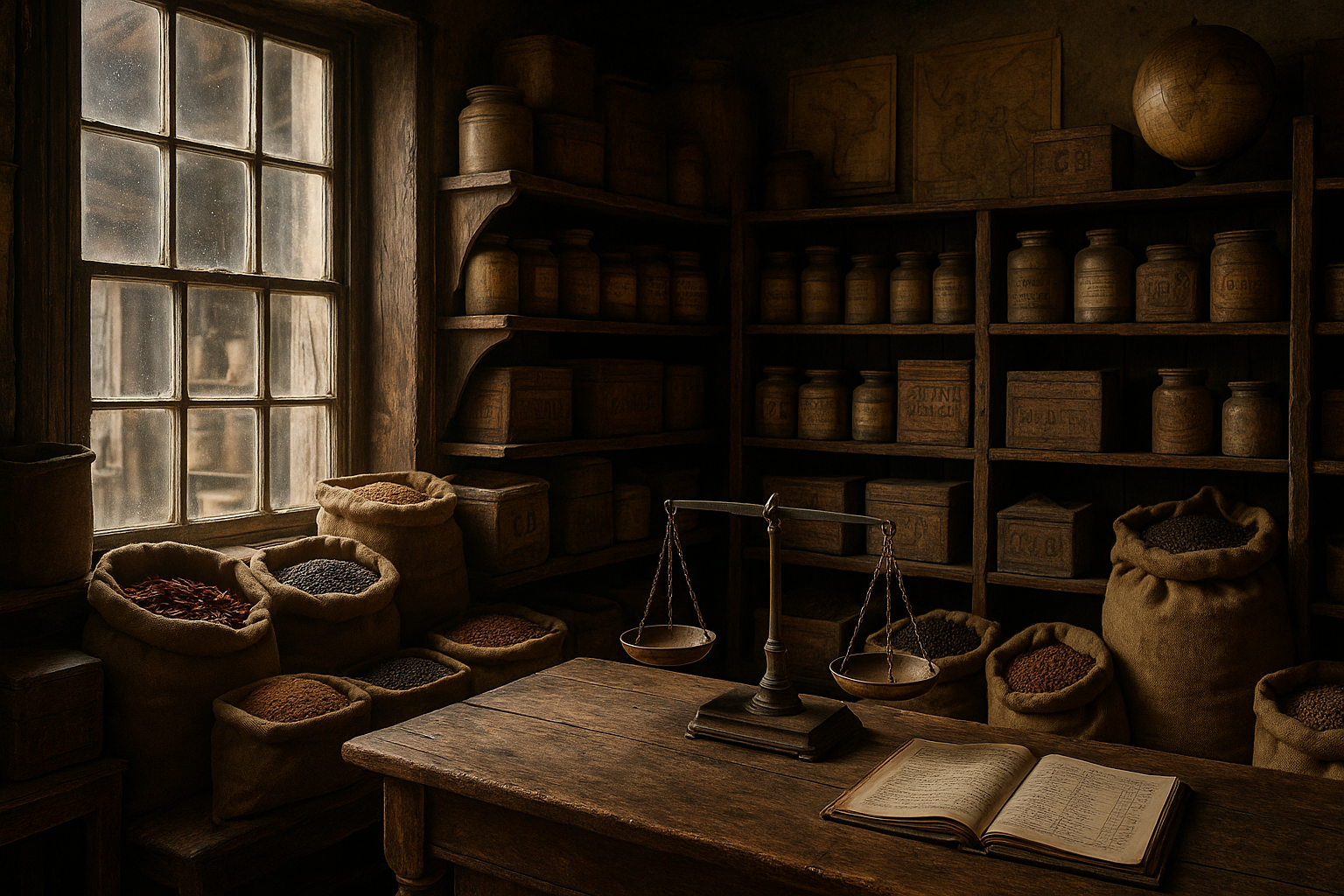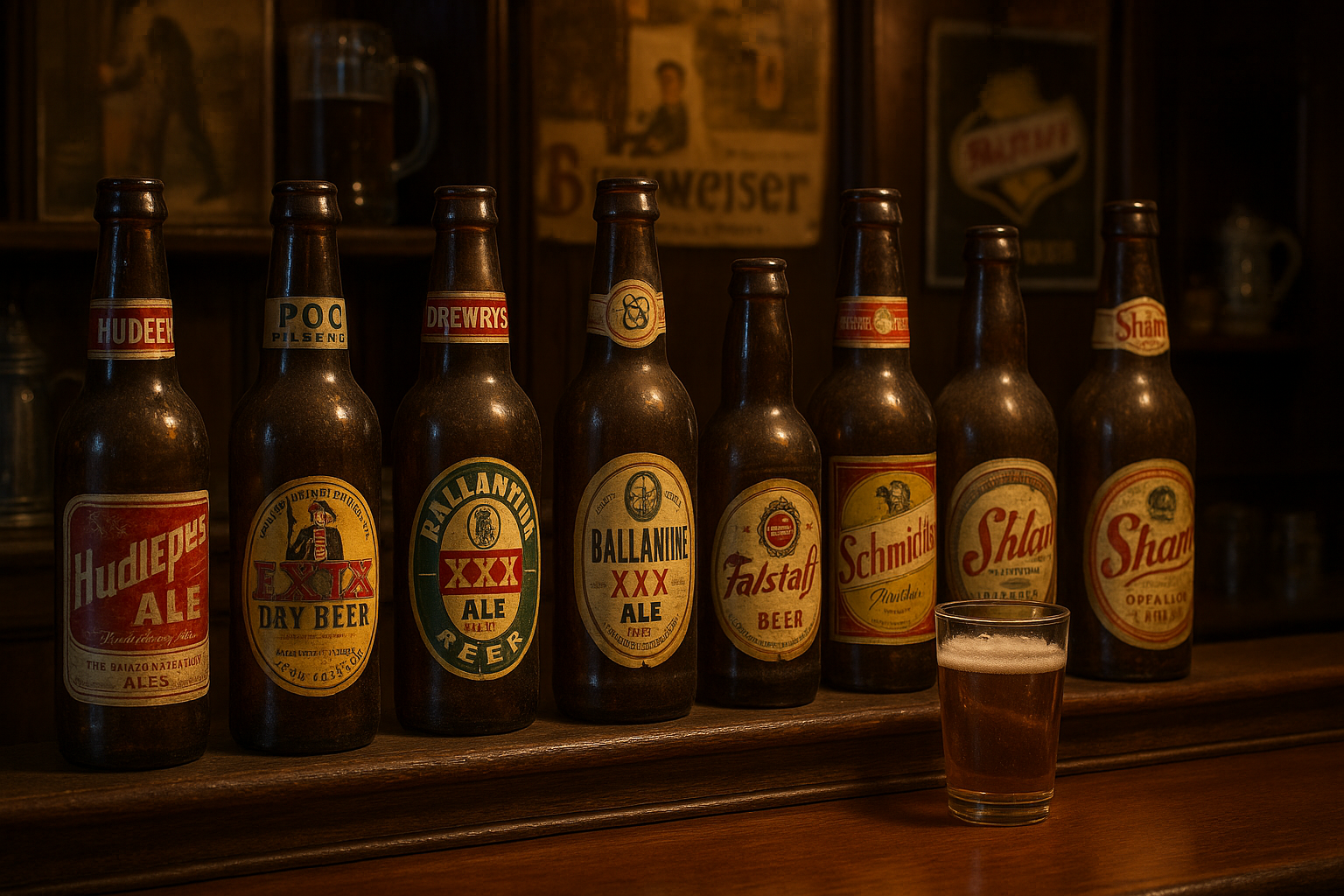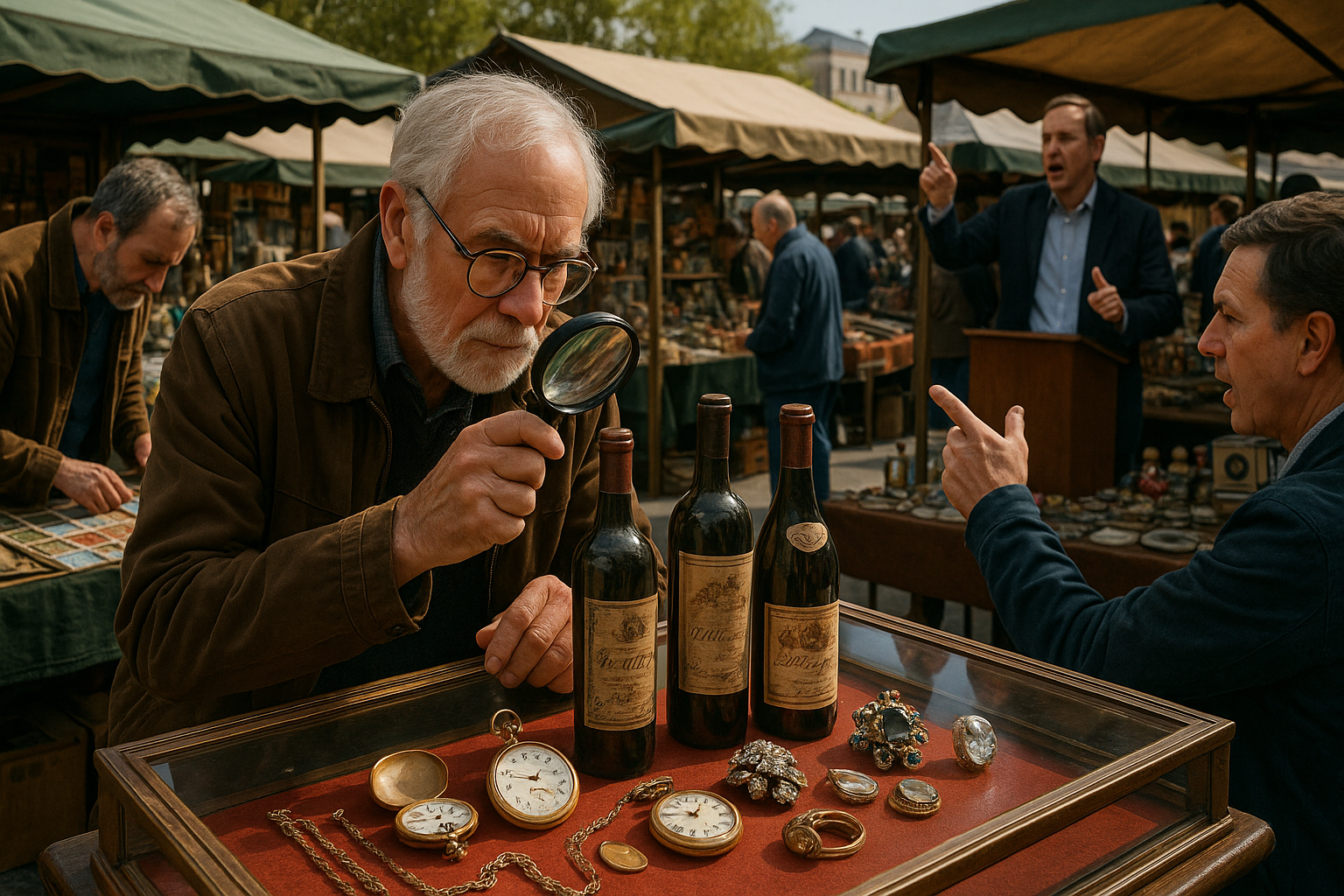In a world where the past continuously intertwines with the present, historical artifacts serve as tangible links to times long gone, offering glimpses into the cultures, values, and daily lives of those who came before us. Among these artifacts, historical label collections hold a unique charm. These labels, whether adorning vintage bottles, antique crates, or early 20th-century consumer goods, are miniature canvases that capture the essence of bygone eras. However, the act of selling these collections presents a complex ethical landscape, filled with questions about ownership, preservation, and cultural significance. 🌍
Imagine stumbling upon a dusty attic box, hidden away for decades, filled with vibrant labels from a Prohibition-era brewery or an early American apothecary. The allure is undeniable. Each label tells a story, reflecting the design trends, technological advancements, and societal norms of its time. Yet, the decision to sell such a collection is not merely transactional; it is a dialogue between preserving history and the commercial realities of the modern world. In navigating this delicate balance, sellers, collectors, and historians alike must consider not only the financial value but also the cultural and educational importance of these artifacts.
The ethical considerations involved in selling historical label collections are multifaceted. On one hand, there is the argument for preservation: that these labels, as cultural artifacts, should remain in public collections, accessible to scholars, historians, and the general public. On the other hand, private ownership can ensure the care and appreciation of labels that might otherwise be neglected or lost. This article delves into the heart of this debate, exploring the responsibilities of sellers and collectors to honor the historical and educational value of these items, while also addressing the legal and ethical implications that arise from their sale.
As we embark on this exploration, we will delve into the history and significance of label collecting, tracing its evolution from a niche hobby to a respected field of historical study. We will examine the ethical dilemmas faced by those involved in the sale of such collections, drawing on case studies and expert opinions to illuminate best practices. Furthermore, we will consider the role of technology in preserving and sharing these collections with a global audience. Ultimately, this article seeks to provide a comprehensive guide to navigating the ethical waters of selling historical label collections, ensuring that these relics of the past are preserved and appreciated for generations to come. 🕰️
Understanding the Historical Significance of Label Collections
Historical label collections are fascinating artifacts that provide a window into the past. These collections encompass labels from a variety of products, including food, beverages, household goods, and more, dating back to various eras. The aesthetic design, typography, and imagery on these labels reflect the cultural, economic, and technological contexts of their time. They serve not only as collectible items but also as educational tools, offering insights into branding, marketing, and consumer trends across different historical periods. 🌟
The art of collecting historical labels is often pursued by enthusiasts, historians, and archivists who recognize the value in preserving these pieces of history. However, navigating the sale and exchange of such collections involves ethical considerations. The commercialization of historical items can sometimes lead to their detachment from their cultural context, raising questions about authenticity, ownership, and preservation.
The Historical Context of Labels
The history of product labeling dates back to ancient civilizations, where simple marks or symbols were used to identify goods. However, the modern concept of labels as we know them today emerged during the Industrial Revolution. The advent of mass production and increased competition among manufacturers led to the development of more sophisticated branding techniques, with labels playing a crucial role in differentiating products.
During the late 19th and early 20th centuries, labels became more colorful and intricate, often featuring elaborate illustrations and typography. This period saw the rise of iconic brands and trademarks, many of which remain recognizable today. As technology advanced, so did the printing techniques used for labels, resulting in higher quality and more durable designs.
Labels from different periods often reflect the social and political climates of their time. For example, wartime labels might include patriotic imagery or slogans, while labels from the 1960s might feature psychedelic designs inspired by the cultural movements of the era. Understanding these historical contexts is essential for collectors and historians seeking to preserve the integrity of label collections.
Ethical Considerations in Selling Historical Label Collections
Selling historical label collections involves a complex web of ethical considerations. One of the primary concerns is the potential for these artifacts to be commodified without regard for their historical and cultural significance. This raises questions about the role of collectors and dealers in preserving history versus profiting from it. 🤔
Ownership rights are another crucial aspect of the ethical debate. When labels are removed from their original context, it can be challenging to determine their provenance. Collectors must ensure that they acquire labels legally and that they respect any cultural or historical claims associated with these items. This can be particularly important for labels with significant historical or cultural value, as their sale might contribute to the erasure of important historical narratives.
The preservation of label collections also involves considering the impact of environmental factors. Proper storage and conservation methods are essential to maintain the integrity of the labels, especially those made from delicate materials like paper or early plastics. Collectors and dealers must balance the desire to showcase these items with the need to protect them from deterioration.
Navigating the Marketplace for Historical Labels
The market for historical labels is diverse, ranging from small private collections to large-scale auctions. Understanding the marketplace dynamics is crucial for both buyers and sellers, as it influences pricing, demand, and availability of labels. Collectors often rely on online platforms, antique shops, and specialized dealers to find and sell rare labels.
Transparency is key in the marketplace for historical labels. Sellers should provide accurate information about the labels’ origins, condition, and any relevant historical context. Buyers, in turn, should conduct thorough research and seek expert opinions when necessary to ensure they are making informed purchases. 🤓
As the demand for vintage and historical labels grows, there is also an increasing need for regulation and oversight. Ensuring ethical practices in the buying and selling of these items helps protect both the cultural heritage they represent and the integrity of the marketplace.
Preservation Techniques for Historical Labels
Preserving historical label collections requires careful attention to detail and a comprehensive understanding of conservation techniques. Labels, particularly those made of paper, are susceptible to damage from light, humidity, and handling. Implementing effective preservation strategies ensures these artifacts remain intact for future study and enjoyment. 🛡️
One of the fundamental aspects of preservation is proper storage. Labels should be kept in a controlled environment, away from direct sunlight and fluctuations in temperature and humidity. Acid-free materials, such as archival-quality boxes and sleeves, are recommended to prevent chemical reactions that can lead to deterioration. Additionally, labels should be handled minimally and with clean hands or gloves to prevent oils and dirt from causing damage.
Digitization is another valuable tool in label preservation. By creating high-quality digital scans or photographs of labels, collectors can reduce the need for physical handling, thereby minimizing wear and tear. Digital archives also provide opportunities for broader access to label collections, allowing researchers and enthusiasts to explore these historical artifacts without compromising their physical condition.
Collaborative Efforts in Label Preservation
The preservation of historical labels often involves collaborative efforts among collectors, historians, and cultural institutions. Museums and archives play a vital role in safeguarding label collections and making them accessible to the public. Collaborations between private collectors and public institutions can enhance the preservation and study of these artifacts by pooling resources and expertise.
Community initiatives and educational programs are also effective ways to engage the public in the preservation of historical labels. By raising awareness of the cultural and historical significance of these items, such programs encourage responsible collecting practices and foster a greater appreciation for the role labels play in our shared history.
Exploring the Future of Historical Label Collections
As technology and societal values continue to evolve, so too does the future of historical label collections. The increasing digitization of artifacts offers new possibilities for preservation and accessibility, enabling a wider audience to engage with these cultural treasures. However, this also presents challenges, such as ensuring the accuracy and authenticity of digital representations.
The role of technology in label collecting is multifaceted. On one hand, online platforms and databases provide valuable resources for collectors, offering tools for cataloging and sharing their collections. On the other hand, digital platforms can sometimes contribute to the commodification of historical items, emphasizing their monetary value over their cultural significance. Balancing these aspects is crucial for the responsible growth of the label collecting community. 📈
As society becomes more conscious of cultural heritage and the ethical implications of collecting, there is a growing emphasis on transparency and accountability. Collectors and dealers are increasingly expected to adhere to ethical guidelines, ensuring that their practices contribute positively to the preservation of history. This shift towards ethical collecting practices is an encouraging trend that underscores the importance of historical label collections as educational and cultural resources.
Innovative Approaches to Collecting and Display
The future of historical label collections also involves exploring innovative approaches to collecting and display. Virtual reality and augmented reality technologies offer exciting possibilities for immersive exhibitions, allowing viewers to experience labels in their historical context. These technologies can also facilitate interactive educational experiences, providing deeper insights into the stories behind the labels.
In addition to technological innovations, there is a growing interest in interdisciplinary approaches to label collecting. By integrating perspectives from fields such as art history, sociology, and marketing, collectors can gain a more comprehensive understanding of the cultural significance of labels. This holistic approach enriches the study and appreciation of historical label collections, fostering a deeper connection to the past.
Ultimately, the future of historical label collections is shaped by a commitment to preservation, ethical practices, and innovative engagement with cultural heritage. By embracing these principles, collectors and enthusiasts can continue to explore the rich tapestry of history encapsulated in these fascinating artifacts.
Additional Resources and Community Involvement
For those interested in delving deeper into the world of historical label collections, a variety of resources are available. Online communities, forums, and social media groups provide platforms for collectors to share their experiences, exchange knowledge, and collaborate on preservation projects. Engaging with these communities can be an enriching experience, offering opportunities to learn from seasoned collectors and contribute to the collective understanding of historical labels.
- Join online forums and communities dedicated to historical label collecting.
- Participate in workshops and seminars on preservation techniques.
- Collaborate with museums and archives to enhance public access to label collections.
For a visual exploration of historical labels and their significance, watch this insightful video: [The Art of Label Collecting by ChannelName](https://www.youtube.com/watch?v=example).
| Historical Period | Label Characteristics | Significance |
|---|---|---|
| Late 19th Century | Intricate illustrations, early brand trademarks | Reflects industrialization and brand emergence |
| Early 20th Century | Colorful designs, art deco influences | Highlights cultural shifts and technological advances |
| Mid 20th Century | Bold typography, modernist styles | Showcases post-war optimism and innovation |
Through thoughtful exploration and responsible stewardship, historical label collections can continue to illuminate the diverse stories of our past, enriching our understanding of the cultural and historical forces that have shaped our world.

Conclusion
**Conclusion**
In reflecting on the intricate topic of preserving history through the lens of selling historical label collections, we’ve journeyed through a multifaceted landscape that marries the past with the present. Our exploration has been both wide-ranging and deeply insightful, touching upon the delicate balance between commercial interests and the preservation of cultural heritage.
To recap, we began by discussing the intrinsic value of historical labels—not merely as commercial artifacts but as cultural touchstones that offer a glimpse into the socio-economic and artistic expressions of bygone eras. These labels, often underestimated, are potent symbols of the times they were created in, encapsulating trends, values, and technological advancements. We examined how these collections serve as vital links to our past, providing researchers and historians with tangible evidence of cultural narratives.
Next, we delved into the ethical considerations surrounding the sale of such collections. The commodification of historical artifacts raises important questions about ownership, access, and preservation. We explored the potential conflicts that arise when private interests intersect with public heritage, emphasizing the need for a sensitive approach that respects both the integrity of historical artifacts and the rights of individuals to own and appreciate them.
Furthermore, we discussed the role of museums, libraries, and archives in this discourse. These institutions often find themselves at the center of debates about accessibility and preservation, as they strive to balance public interest with the practicalities of acquisition and maintenance. Their role as custodians of history is pivotal, yet they also face the challenge of evolving in response to digitalization and changing public expectations.
The conversation also highlighted the importance of provenance and authenticity, key factors that influence both the ethical and monetary value of historical collections. We underscored the necessity for rigorous documentation and transparent practices in the buying and selling of historical labels, advocating for standards that protect both the buyer and the historical significance of the artifacts.
Finally, we turned our attention to the future, considering how technological advancements, such as digital archiving and blockchain, might revolutionize the way historical collections are preserved and traded. These innovations offer exciting possibilities for enhanced transparency and accessibility, ensuring that historical artifacts are not only preserved but also made widely available to the public.
The importance of this subject cannot be overstated. As stewards of history, we hold a responsibility to navigate these ethical waters with care and foresight. The choices we make today in preserving and sharing our cultural heritage will shape the narratives available to future generations. It’s imperative that we engage with these issues thoughtfully, ensuring that the sale and preservation of historical label collections honor the past while enriching our understanding of it.
We encourage you, dear reader, to reflect on the themes we’ve discussed. Consider the impact of your actions, whether as a collector, historian, or enthusiast, on the preservation of history. Share this knowledge with others, sparking discussions that could lead to innovative solutions and heightened awareness. By doing so, you contribute to a collective effort to honor and preserve our shared cultural heritage.
Please feel free to comment on your thoughts and experiences related to historical label collections. Your insights are invaluable and can greatly enrich the ongoing conversation. If you found this discussion enlightening, consider sharing it with your networks to foster a broader dialogue. Together, let’s ensure that the stories of our past are preserved with the dignity and respect they deserve.
For further exploration of this fascinating subject, you can visit the following resources:
– [Smithsonian Institution](https://www.si.edu/) – Offers extensive collections and research articles on historical artifacts.
– [International Council of Museums (ICOM)](https://icom.museum/en/) – Provides guidelines and ethical codes regarding the preservation and sale of cultural heritage.
– [Library of Congress](https://www.loc.gov/) – Features a wealth of resources on historical documents and their preservation.
Your participation in this journey is not just appreciated; it is essential. Let’s work together to ensure that the treasures of our past continue to inform and inspire generations to come. 🌍📜
Toni Santos is a visual poet and botanical dreamweaver, archiving the ephemeral beauty of dreams through nature’s delicate language.
In his artistic universe, every petal, vine, and root becomes a memory—an echo from the subconscious—preserved in time like pages from an ethereal journal. Toni treats plants not just as living beings, but as dream-symbols: vessels of forgotten feelings, silent wishes, and secret stories waiting to unfold.
His work is rooted in the belief that nature holds the vocabulary of dreams. Through botanical compositions, symbolic floral creations, and enchanted visual studies, he gives form to the unseen — the moment between sleep and wakefulness, where memory fades and imagination begins.
As the visionary behind Vizovex, Toni curates collections that feel like fragments of a dreamscape: moss-filled glass jars, mythic flowers, ancient botanical symbols reimagined. These creations invite you to explore your inner worlds and reawaken your sense of wonder.
His work is a tribute to:
The dreamlike language of plants and natural symbols.
The quiet messages found in forgotten moments.
The art of recording the soul’s memories in organic form.
Whether you’re a seeker of meaning, a lover of myth, or someone who drifts between the symbolic and the real, Toni welcomes you to explore an archive of dreams — one petal, one relic, one timeless whisper at a time





